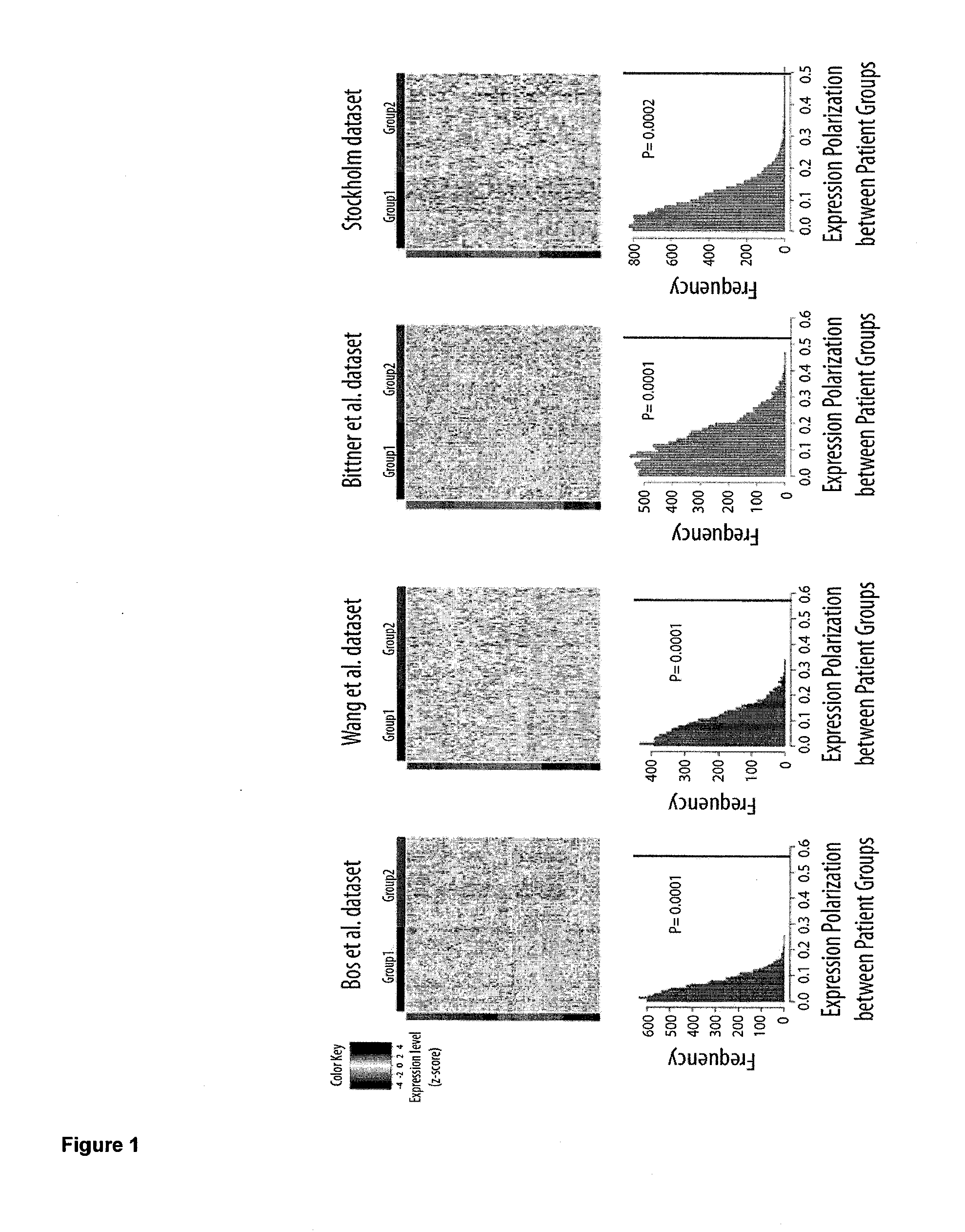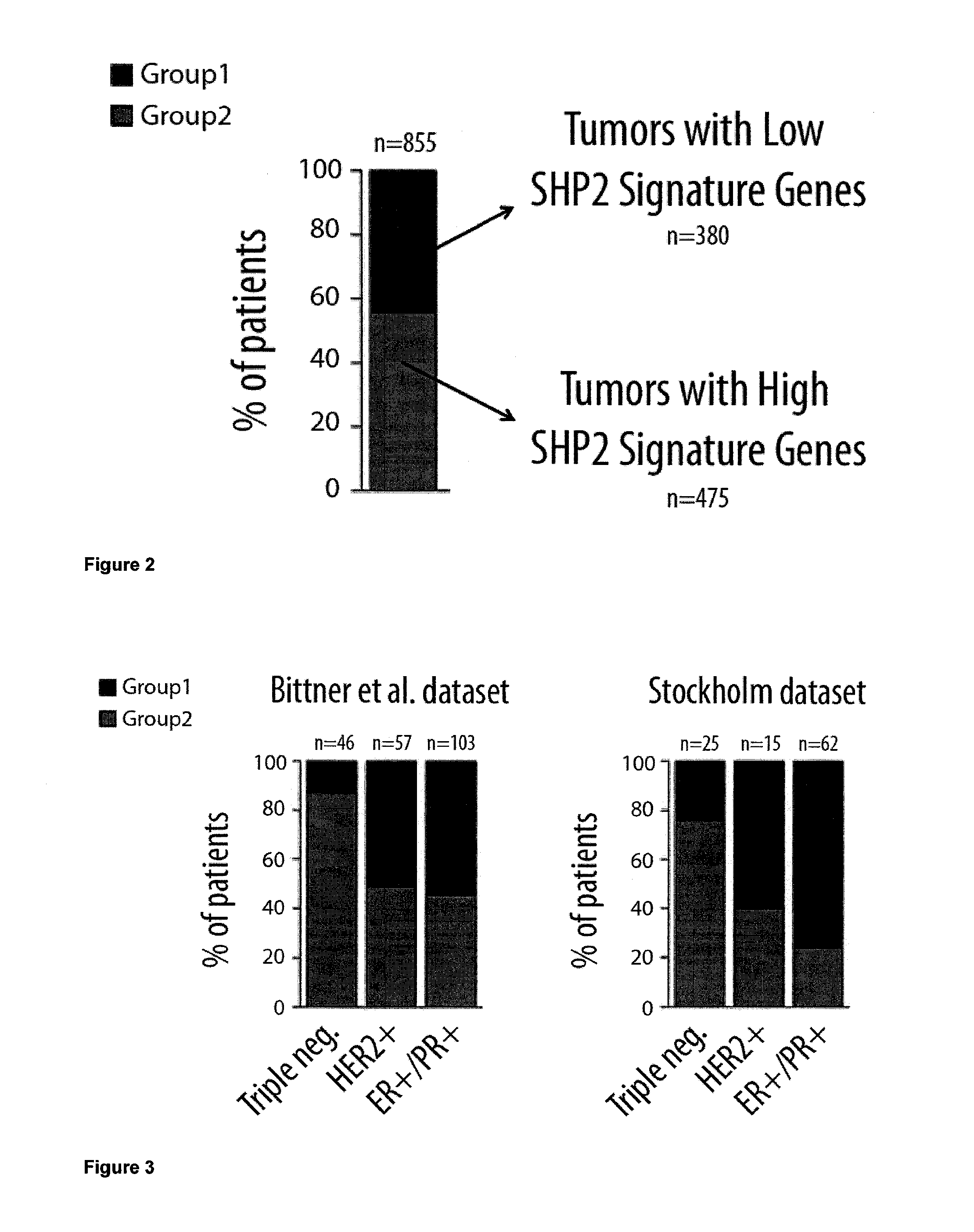Protein tyrosine phosphatase, non-receptor type 11 (ptpn11) and triple-negative breast cancer
a technology of protein tyrosine phosphatase and breast cancer, which is applied in the field of cancer treatment methods, can solve the problems of still not understanding the biology of breast cancer, and achieve the effect of reducing tumor growth
- Summary
- Abstract
- Description
- Claims
- Application Information
AI Technical Summary
Benefits of technology
Problems solved by technology
Method used
Image
Examples
examples
Constructs
[0104]For the inducible RNAi studies, 97-mer shRNAmiR (miR) were obtained from Sigma, PCR-amplified, sequence-confirmed and cloned into the dox-inducible lentiviral vector pINDUCER (Meerbrey, et al. Proc Natl Acad Sci U S A (2011)). Two miRs targeting SHP2, SHP2 miR1 (5′-TGCTGTTGACAGTGAGCGCGGGCACGAATATACAAATATTTAGTGAAGCCACAGATGTA AATATTTGTATATTCGTGCCCTTGCCTACTGCCTCGGA-3′; SEQ ID NO:2) and SHP2 miR2 (5′-TGCTGTTGACAGTGAGCGACCACGTATATTATGTAGTCTATAGTGAAGCCACAGATGTATAGACTA CATAATATACGTGGGTGCCTACTGCCTCGGA-3′; SEQ ID NO:3) were used. As a control, a miR targeting firefly luciferase (CTRL miR) was used.
Animal experiments
[0105]Experiments with SCID-beige mice (Jackson Labs) were carried out according to FMI guidelines. For the xenograft studies, 106 BT474, 5×106 SKBR3, 106 MCF10A-NeuNT, 106 SUM159 or 106 SUM1315 cells were suspended in a 100-μl mixture of Basement Membrane Matrix Phenol Red-free (BD Biosciences) and PBS 1:1 and injected orthotopically. For BT474 cells injections, t...
PUM
| Property | Measurement | Unit |
|---|---|---|
| pH | aaaaa | aaaaa |
| molecular weight | aaaaa | aaaaa |
| molecular weight | aaaaa | aaaaa |
Abstract
Description
Claims
Application Information
 Login to View More
Login to View More - R&D
- Intellectual Property
- Life Sciences
- Materials
- Tech Scout
- Unparalleled Data Quality
- Higher Quality Content
- 60% Fewer Hallucinations
Browse by: Latest US Patents, China's latest patents, Technical Efficacy Thesaurus, Application Domain, Technology Topic, Popular Technical Reports.
© 2025 PatSnap. All rights reserved.Legal|Privacy policy|Modern Slavery Act Transparency Statement|Sitemap|About US| Contact US: help@patsnap.com


